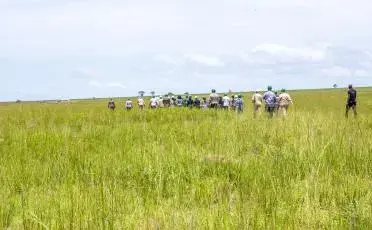The ESIA Report for the Tilenga Feeder Pipeline Project has been prepared in accordance with the National Environment Act, and Environmental Impact Assessment Regulations (EIA), 1998.
The development of the ESIA Strategy for the Project was undertaken following discussions between the Project Proponents and the key Ugandan Regulators including National Environment Management Authority (NEMA) and Ministry of Energy and Mineral Development (MEMD). During the life of the Project, the Project Proponents will continually engage with relevant regulatory bodies including NEMA, the Petroleum Authority of Uganda (PAU), the Directorate of Water Resource Management (DWRM), National Forestry Authority (NFA), and others as necessary.
On behalf of the Project Proponents, TotalEnergies EP Uganda (TEPU) and the China National Offshore Oil Company Uganda Limited (CNOOC) the ESIA Report was prepared by independent NEMA registered Environmental Practitioners from RSK and Eco & Partner Consult.
The Project Proponents are committed to meeting best international practice for undertaking ESIA and thus the Project’s environmental and social performance will also meet the requirements of the International Finance Corporation (IFC) Performance Standards (PS) (2012).

Tilenga Feeder ESMP
This section describes how the mitigation measures identified in this environmental and social impact assessment (ESIA) will be implemented and monitored.

Tilenga Feeder ESIA Introduction
This is an introduction to the Tilenga feeder pipeline environmental impact statement.

Tilenga Feeder Pipeline ESIA: Sources of Cumulative Impact
Potential cumulative impact on groundwater around KP95, where the Tilenga feeder pipeline and the export pipeline converge at the manifold at EACOP’s PS1.

Tilenga Feeder ESIA Alternatives
This section summarises the process undertaken during pre-front-end engineering design (design process before FEED) and FEED to evaluate the technically and financially feasible alternatives for the Tilenga feeder pipeline while taking into account environmental and social impacts.

Tilenga Feeder ESIA Legislative
Tilenga Feeder Pipeline ESIA Section 4: Legislative, Policy and Administrative Framework, Permitting Requirements, and International Conventions, Standards, Guidelines and Agreements.

ESIA process & method
The key steps of the Tilenga feeder pipeline ESIA process are illustrated in Figure 5.2-1, including steps through to pipeline implementation and the subsequent phase of reporting, audit and corrective actions.

Environment & social baseline conditions
This section describes the existing environmental and social baseline conditions of the VECs for the Tilenga feeder pipeline.

Tilenga Feeder Pipeline ESIA: Project description
This section describes the components of the Tilenga feeder pipeline associated with the Tilenga Project.

Tilenga Feeder Pipeline ESIA: Stakeholder engagement
The term “stakeholder engagement” is a means of describing a broad, inclusive, and continuous process between a company and those potentially impacted that encompasses a range of activities and approaches and spans the entire life of a project (IFC 2007).

Tilenga Feeder Pipeline ESIA Section 12: References
Tilenga Feeder Pipeline ESIA Section 12: References

Tilenga Feeder Pipeline ESIA: Sources of Cumulative Impact
This presents the associated facilities that have been screened in to the cumulative impact assessment, and Table H1.2 shows the third-party developments that have been screened in to the cumulative impact assessment based on the criteria defined in Section 5 of the ESIA

Tilenga Feeder ESIA CHA Summary
This Appendix provides an up-to-date summary of findings from the Critical Habitat Assessment (CHA) Interpretation carried out in 2017 (TBC & FFI 2017).

Tilenga Feeder ESIA EACOP Standard
Subject to the regulatory requirements of Uganda and Tanzania and requirements of international lending institutions, environmental & social impact assessments, & stakeholder engagements have been implemented.

Tilenga Feeder Pipeline ESIA - Executive summary
The environmental and social impact (ESIA) report is conducted to identify, describe and assess the likely interactions of the Tilenga feeder pipeline with environmental and socio-economic receptors, termed as “valued environmental and social components” (VECs).

EA-1/EA-1A & EA-2 North Project – ESIA Scoping Report / Terms of Reference
The Environmental and Social Impact Assessment (ESIA) for the Exploration Area (EA) 1, 1A & EA-2 North Development Project commenced in May 2015 with AECOM as the lead consultant in partnership with Eco & Partner Consult as the local consultant. The project located in Buliisa and Nwoya Districts within Western Uganda.
